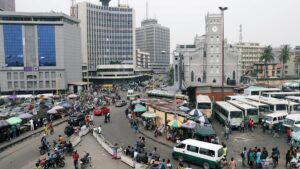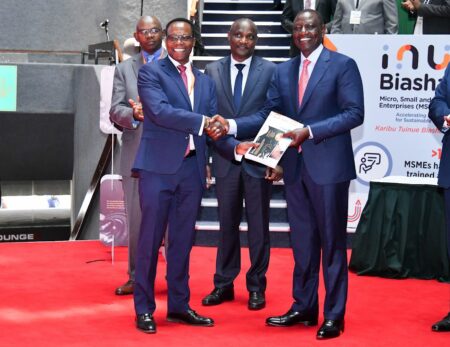33% of manufacturers in the country plan to reduce the number of full time employees
Only 48 per cent of manufacturers in Kenya have expressed optimism that the sector would grow this year, a latest survey has revealed, as investments in the country continue to face headwinds.
According to the Q1 ‘Manufacturing Barometer’ by the Kenya Association of Manufacturers (KAM), the biggest worry by industry players over the next six months (61 per cent) is the high cost of raw materials, which is making their products uncompetitive both locally, regional and in the international markets.
About 57 per cent are worried about pressure from increased wages, 54 per cent are concerned over decreasing profitability while 48 per cent fear that taxation policies in the country will affect their businesses.
Oil and energy prices which have remained high worries 43 per cent of the surveyed manufacturers in the country, the study which covers the months of January-March indicate.
Other concerns are unhealthy competition from cheap imports (43%), legislative regulatory pressure and uncertainty (43%), exchange rate stability (38%), lack of demand (33%) and capital constraints (28%).
READ:Kenya’s steel makers lobby for zero rated fees to boost sector
This comes as majority of manufacturers’ surveyed (60 per cent) feel the Kenyan Economy stagnated in the first quarter of 2019, with only 21 per cent believed it was growing. The remaining 19 per cent believe the economy was declining.
Business challenges in Q1
“In January and February, we experienced delays in clearance of our cargo at the port and Inland Container Depot in Nairobi, affecting our production operations” a section of the manufacturers reported.
READ ALSO:KRA assures traders of enhanced service delivery at ICD
Other challenges include delays in payment of suppliers by government which according to the KAM survey has brought liquidity challenges from the market especially to SMEs.
Businesses in the country have also been affected by a cash crunch which is dampening consumers’ purchasing power.
This is in the wake of the interest rate cap law that has seen banks invest more in government securities while they profile individuals and majority of SMEs as “high risk borrowers.”
The law which came into place in 2016 caps interest rates at four percentage points above the Central Bank of Kenya (CBK) currently at nine per cent (9%), placing maximum interest chargeable by commercial banks in the country at 13 per cent.
Previously, banks used to charge as high as 24 per cent interest on loan facilities.
Credit market
Last year, the share of loans and advances to the private sector decreased from 56.9 per cent as at December 2017 to 55.3 per cent as at December 2018, the 2019 Economic Survey shows.
With marginal changes across various activities, loans and advances to the public sector however increased to 29.8 per cent as at December 2018 from 27.8 per cent as at December 2017.
The share of credit to the National Government increased from 24.4 per cent as at December 2017 to 27.0 per cent as at December 2018.
The survey released on April 25, indicates during the review period, interest income earned by commercial banks rose by 30.7 per cent from Ksh368.2 billion (USD3.6 billion) in 2017 to Ksh379.6 billion (USD3.8 billion).
“This growth was mainly driven by interest from investment in government securities which increased by 13.4 per cent in the review period,” the Kenya National Bureau of Statistics (KNBS) states in the Economic Survey.
The growth of interest income from loans and advances however contracted by 1.7 per cent in 2018, official government data indicate.
According to the government statistician, credit advanced to the manufacturing sector by commercial banks and industrial financial institutions nevertheless rose from Ksh315.3 billion (USD3.1 billion) in 2017 to Ksh335.7 billion (USD3.3 billion) in 2018, a marginal 6.5 per cent.
Manufacturing sector to GDP
During the year 2018, the manufacturing sector expanded by 4.2 per cent compared to a revised growth of 0.5 per cent in 2017, mainly buoyed by increased agro-processing.
“This was mainly on account of increase in production of dairy products, tea, coffee and sugar due to favourable weather conditions. However, the plastic products, wood and other products of wood, and other non-metallic mineral products subsectors registered declines in the review period,” KNBS Director General Zachary Mwangi noted during the release of the survey in Nairobi.
The sector’s output volume expanded by 5.1 per cent in 2018 from a revised contraction of 0.8 per cent in 2017, becoming among the biggest contributors to the country’s Gross Domestic Product (GDP).
This helped the economy grow by 6.3 per cent up from 4.9 per cent posted in 2017, the Economic Survey indicate, creating 840,600 new jobs as the country recovered from effects of the persistent drought experienced in 2017, coupled with uncertainties during the prolonged general elections.
READ:How Kenya managed to grow its economy by 6.3%
Growth and investments
Meanwhile, 52 per cent of manufacturers are optimistic the economy will grow in the next six months with 42 per cent being uncertain. About six per cent are pessimistic about growth.
“Rampant corruption and increased bureaucracy in government agencies is hampering Kenya’s growth prospects,” KAM says in its report in relation to sentiments expressed by its members.
“The Agricultural sector slowed down on account of the delays in rains. This will have an effect on the industry. The KRA tax refund process is too slow and is likely to have an effect on manufacturers’ cash flow, hence hampering economic activities,” respondents in the survey noted.
Almost half (48%) of manufacturers are planning new investments while a bigger chunk (52%) are reluctant to invest “due to challenges such as delays in VAT refunds and an uncertain business environment.”
In the first quarter, majority (47%) of manufacturers operated at about half capacity while 33 per cent reported to be operating at 75 per cent of installed capacity. Only 20 per cent of surveyed manufacturers were operating at near full capacity during the quarter under review.
Going forward, 33 per cent of the manufacturers have said they plan to reduce the number of full time equivalent employees while majority, (43%) plan to retain the status quo.
“Close to half of surveyed manufacturers plan new major capital investments in the next six months. These findings indicate a significant number of firms planning capital expenditure spending,” KAM said.
Majority, (69%) plan to increase operational spending. The key areas of spending according to the survey will be on marketing and sales promotion (81%), advertising (33%), facilities expansion (29%), information and technology (29%) and new product or service introduction (24%).
Most of those surveyed came from the plastic and rubber sub-sector( 26%), food and beverages(23%) and the chemical and allied and metal and allied sub-sectors both accounting for 17 per cent of the surveyed.
Other sectors were leather and footwear, motor vehicle pnd accessories, paper and board sector, pharmaceutical and medical equipment, building, mining and construction, timber, wood and furniture, fresh produce and the textile and apparels sector.
Government plan
Manufacturing is among top priority areas for the government under its ‘Big Four Agenda’ where it plans to increase the sectors’ contribution to the GDP to 15 per cent by 2022, from the current 8.5 per cent.
This is through investments and expansion in agro-processing, textile, apparels and leather sectors.
The government is also counting on heavy industries (oil and gas, mining and iron and steel) and ICT and services, to grow the sector with an expectation of creating one million new jobs.
READ:Why President Kenyatta’s Big Four is under threat
To achieve this, President Uhuru Kenyatta’s administration is keen to bring down the cost of power while putting in place other measures and incentives to bring down the cost of doing business in the country.
“There is no turning back on the obligations we have made in the Big Four Agenda. In 2019, we expect an even stronger growth of 6.3 percent, reflecting continued improvement in the business environment, momentum associated with execution of the Big Four Agenda, and sustained macroeconomic stability,” President Kenyatta said during his recent ‘State of the Nation’ address.











